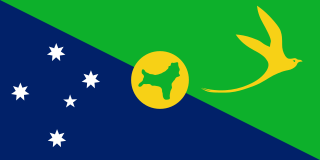
A trade union is an association of workers forming a legal unit or legal personhood, usually called a "bargaining unit", which acts as bargaining agent and legal representative for a unit of employees in all matters of law or right arising from or in the administration of a collective agreement. Labour unions typically fund the formal organization, head office, and legal team functions of the labour union through regular fees or union dues. The delegate staff of the labour union representation in the workforce are made up of workplace volunteers who are appointed by members in democratic elections.
The organizing model, as the term refers to trade unions, is a broad conception of how those organizations should recruit, operate, and advance the interests of their members, though the specific functions of the model are more detailed and are discussed at length below. It typically involves many full-time organizers, who work by building up confidence and strong networks and leaders within the workforce, and by confrontational campaigns involving large numbers of union members. The organizing model is strongly linked to social movement unionism and community unionism. The organizing model contributes to the discussion of how trade unions can reverse the trend of declining membership, which they are experiencing in most industrial nations, and how they can recapture some of the political power, which the labor movement has lost over the past century.
The Australian labour movement began in the early 19th century and since the late 19th century has included industrial and political wings. Trade unions in Australia may be organised on the basis of craft unionism, general unionism, or industrial unionism. Almost all unions in Australia are affiliated with the Australian Council of Trade Unions (ACTU), many of which have undergone a significant process of amalgamations, especially in the late 1980s and early 1990s. The leadership and membership of unions hold and have at other times held a wide range of political views, including communist, socialist and right-wing views.

William Guthrie Spence, Australian trade union leader and politician, played a leading role in the formation of both Australia's largest union, the Australian Workers' Union, and the Australian Labor Party.

The Australian Workers Union (AWU) is one of Australia's largest and oldest trade unions. It traces its origins to unions founded in the pastoral and mining industries in the 1880s and currently has approximately 100,000 members. It has exercised an influence on the Australian trade union movement and on the Australian Labor Party throughout its history.
SA Unions is the peak body for trade unions in South Australia. It coordinates political, social, economic, and industrial campaigns between its affiliate members and implements the policies of the Australian Council of Trade Unions in South Australia.

United Voice is a large Australian trade union, with over 130,000 members. United Voice members work in a wide range of occupations including hospitality, childcare, teachers' aides, aged care, property services, health, manufacturing, ambulance workers and community services.

Oxfam Australia is an Australian, independent, not-for-profit, secular, community-based aid and development organisation, and an affiliate of Oxfam International. Oxfam Australia's work includes long-term development projects, responding to emergencies and campaigning to improve the lives of disadvantaged people around the world. They aim to give disadvantaged people improved access to social services, an effective voice in decisions, equal rights and status, and safety from conflict and disaster.
Community unionism, also known as reciprocal unionism, refers to the formation of alliances between unions and non-labour groups in order to achieve common goals. These unions seek to organize the employed, unemployed, and underemployed. They press for change in the workplace and beyond, organizing around issues such as welfare reform, health care, jobs, housing, and immigration. Individual issues at work are seen as being a part of broader societal problems which they seek to address. Unlike trade unions, community union membership is not based on the workplace- it is based on common identities and issues. Alliances forged between unions and other groups may have a primary identity based on affiliations of religion, ethnic group, gender, disability, environmentalism, neighborhood residence, or sexuality.

The Pacific Union is a proposed development of the Pacific Islands Forum, suggested in 2003 by a committee of the Australian Senate, into a political and economic intergovernmental community. The union, if formed, will have a common charter, institutions and currency. Although former Prime Minister of Australia John Howard spoke of a Pacific Union whilst in office, his government's emphasis was focused on bilateral relations and agreements with the individual states of the Forum.

The Federated Miscellaneous Workers' Union (F.M.W.U.), commonly known as the 'Missos', was an Australian trade union which existed between 1915 and 1992. It represented an extremely diverse and disparate range of occupations, but its core support came from workers employed in cleaning and security services.
A customs territory is a geographic territory with uniform customs regulations and there are no internal customs or similar taxes within the territory. Customs territories may fall into several types:

The labour movement or labor movement consists of two main wings, the trade union movement or labor union movement, also called trade unionism or labor unionism on the one hand, and the political labour movement on the other.
Lillian Oh was the president of the Christmas Island Shire Council between 1993 and 1995.
Gordon Sinclair Thompon is a politician based on Christmas Island. He served as President of the Shire of Christmas Island Shire Council from 2003 to 2011 and is, at present, the Shire-President again, serving since 2013. He is a member of the Australian Labor Party and has also served as the General Secretary of the Union of Christmas Island Workers.








